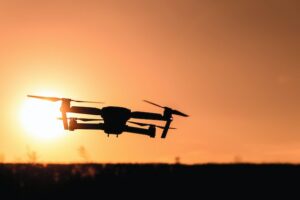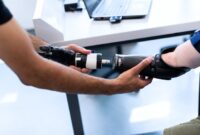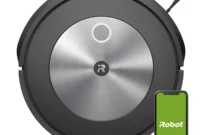Drones have revolutionized the world of photography and videography, offering a unique perspective and capturing breathtaking aerial shots. These unmanned aircraft equipped with high-quality cameras have become increasingly popular among hobbyists, professionals, and even racing enthusiasts. In this comprehensive guide, we will delve into the world of drone cameras, exploring their types, working principles, features, legal considerations, tips for choosing the right one, photography and videography techniques, post-processing, popular applications, and future advancements. So let’s demystify drone cameras and unlock the possibilities they offer.

Introduction
What are drone cameras?
Drone cameras, also known as unmanned aerial vehicles (UAVs), are remotely controlled aircraft that are equipped with cameras to capture photos and videos from an aerial perspective. They have gained significant popularity due to their ability to capture stunning visuals and provide a unique viewpoint that was once limited to professional filmmakers or aviation enthusiasts.
Importance of drone cameras
Drone cameras have transformed various industries and activities, from photography and videography to land surveying and even search and rescue operations. Their versatility and maneuverability make them valuable tools for capturing breathtaking images and videos that were previously unattainable.
Types of drone cameras
Drone cameras come in different types, each catering to specific needs and skill levels.
Consumer drones
Consumer drones are designed for hobbyists and enthusiasts who want to explore the world of aerial photography and videography. They are usually compact, lightweight, and easy to operate, making them suitable for beginners.
Professional drones
Professional drones are more advanced and offer higher-quality cameras, longer flight times, and enhanced stability features. They are commonly used by photographers, videographers, and filmmakers to capture stunning visuals for commercial purposes.
Racing drones
Racing drones are built for speed and agility. They are equipped with powerful motors and designed for competitive racing events, providing an adrenaline-filled experience for drone enthusiasts.
How do drone cameras work?
Understanding the basic workings of drone cameras is essential to harness their capabilities effectively.
Components of a drone camera
A typical drone camera consists of various components, including the frame, motors, propellers, flight controller, GPS module, camera gimbal, and the camera itself. These components work together to provide stability, control, and the ability to capture high-quality images and videos.
Remote control and live video feed
Drone cameras are controlled remotely using a dedicated controller or a smartphone app. The controller allows the pilot to navigate the drone in the air and adjust camera settings. Many drones also offer a live video feed, enabling the pilot to view real-time footage captured by the drone’s camera.
GPS and navigation systems
Modern drone cameras are equipped with GPS and navigation systems that provide accurate positioning, waypoint navigation, and return-to-home functionality. These features make it easier for pilots to control the drone’s flight path and ensure its safe return.
Features and capabilities of drone cameras
Drone cameras come with a range of features and capabilities that enhance the overall flying and photography experience.
High-resolution cameras
One of the key features of drone cameras is the ability to capture high-resolution photos and videos. They often feature built-in image stabilization technology to ensure smooth and shake-free footage.
Stabilization technology
To counteract the vibrations and movements of the drone in flight, many drone cameras come equipped with stabilization technology. This helps in achieving steady and professional-looking footage, even in challenging weather conditions.
Auto-follow and tracking modes
Some advanced drone cameras offer auto-follow and tracking modes, allowing the drone to automatically track and follow a subject. This feature is particularly useful for capturing dynamic footage of sports events or outdoor activities.
Flight modes and intelligent features
Drone cameras often come with different flight modes and intelligent features, such as waypoint navigation, orbit mode, and follow-me mode. These modes enable pilots to create complex flight paths or automate certain tasks, adding creativity and convenience to the aerial photography experience.
Legal and safety considerations
Before taking to the skies with a drone camera, it’s essential to understand and adhere to the legal and safety considerations.
Drone regulations and permits
Drone regulations vary from country to country, and it’s crucial to familiarize yourself with the rules and regulations in your location. Many countries require drone pilots to register their drones, obtain permits for commercial use, and adhere to specific flight restrictions.
Safe flying practices
To ensure the safety of others and avoid accidents, drone pilots should follow safe flying practices. This includes maintaining visual line-of-sight, flying in appropriate weather conditions, respecting no-fly zones, and staying away from airports and restricted areas.
Privacy concerns
Privacy is a significant concern when it comes to drone cameras. Pilots should be aware of privacy laws and regulations and respect the privacy of individuals when flying their drones. It’s essential to avoid capturing footage in private spaces or intruding on people’s privacy without their consent.
Tips for choosing a drone camera
With a wide variety of drone cameras available on the market, choosing the right one can be a daunting task. Here are some tips to consider:
Purpose and usage
Determine your purpose and how you plan to use the drone camera. Are you a hobbyist looking to capture stunning aerial shots, or are you a professional photographer in need of advanced features?
Camera specifications
Consider the camera specifications, including resolution, image stabilization, and field of view. These factors will directly impact the quality of your footage.
Battery life and flight time
The battery life and flight time of a drone camera are crucial considerations. Longer flight times allow you to capture more footage without frequent interruptions for battery changes.
Price range and budget
Set a budget and consider the price range of drone cameras. Keep in mind that more advanced features often come at a higher cost. Find a balance between your budget and the features you require.
Drone camera photography and videography techniques
Capturing stunning aerial photos and videos requires some knowledge of photography and videography techniques. Here are a few tips to enhance your skills:
Composition and framing
Consider the composition and framing of your shots to create visually appealing images. Use the rule of thirds, leading lines, and interesting perspectives to add depth and interest to your footage.
Camera settings and exposure
Understand the camera settings and exposure settings of your drone camera. Experiment with different settings to achieve the desired look and feel of your footage. Pay attention to lighting conditions and adjust exposure accordingly.
Aerial perspectives and unique angles
One of the advantages of drone cameras is the ability to capture unique aerial perspectives. Explore different angles and heights to create visually captivating shots that are not possible with traditional cameras.
Post-processing and editing drone footage
Once you have captured footage with your drone camera, post-processing and editing can take your visuals to the next level. Here are some steps to consider:
Software and tools for editing
Choose a suitable software or app for editing your drone footage. Popular options include Adobe Premiere Pro, Final Cut Pro, and DaVinci Resolve. These tools offer a range of features for color grading, trimming, and adding effects.
Color grading and stabilization
Color grading can significantly enhance the overall look of your footage. Adjust the colors, contrast, and saturation to achieve the desired aesthetic. Additionally, use stabilization tools to further smoothen your footage, reducing any unwanted shakes or vibrations.
Adding music and effects
To create a captivating video, consider adding music and effects that complement the mood and style of your footage. Select appropriate background music and use effects sparingly to enhance the storytelling aspect of your video.
Popular applications of drone cameras
Drone cameras have found applications in various industries and activities. Here are some popular uses:
Aerial photography and videography
Drone cameras have revolutionized aerial photography and videography. They are widely used to capture stunning landscapes, cityscapes, and nature shots from unique aerial perspectives.
Real estate and architectural surveys
Drone cameras are valuable tools for real estate agents and architects. They enable them to capture aerial views of properties and construction sites, showcasing their full potential to potential buyers and investors.
Search and rescue operations
In search and rescue operations, drone cameras equipped with thermal imaging capabilities can quickly locate missing individuals or assess disaster-affected areas. They provide valuable insights and assist in the planning of rescue missions.
Agriculture and crop monitoring
Drone cameras are increasingly used in agriculture for crop monitoring and analysis. They can capture high-resolution images of fields, helping farmers identify areas that require attention, such as irrigation or pest control.
Future trends and advancements in drone camera technology
The field of drone camera technology is rapidly evolving, and several advancements are on the horizon. Here are some future trends to look out for:
Longer flight times and increased range
Technological advancements are expected to lead to longer flight times and increased range for drone cameras. This will allow pilots to cover more ground and capture footage in remote locations.
Obstacle avoidance systems
Developments in sensor technology and artificial intelligence will enable drones to detect and avoid obstacles autonomously. This will greatly enhance the safety and maneuverability of drone cameras.
AI and automation integration
Artificial intelligence and automation will play a significant role in the future of drone cameras. This includes intelligent flight modes, automated subject tracking, and enhanced image recognition capabilities.
Conclusion
Drone cameras have opened up a world of possibilities in aerial photography and videography. From capturing stunning visuals to assisting in various industries, these unmanned aircraft have become valuable tools for both professionals and hobbyists alike. Understanding the types, working principles, features, legal considerations, and photography techniques associated with drone cameras can help enthusiasts make the most of their aerial adventures. As technology continues to advance, we can expect further innovations and applications in the field of drone camera technology.
FAQs
1. Are drone cameras legal everywhere?
Drone regulations vary from country to country. It’s important to familiarize yourself with the specific rules and regulations in your location before flying a drone camera.
2. How far can drone cameras fly?
The flight range of a drone camera depends on the model and its specifications. Consumer drones typically have a range of a few hundred meters, while professional drones can fly several kilometers away from the pilot.
3. Can I use a drone camera for professional photography?
Absolutely! Many professional photographers and videographers utilize drone cameras to capture stunning aerial shots for commercial purposes. However, be sure to check local regulations and obtain any necessary permits for commercial drone use.
4. What is the average battery life of a drone camera?
The battery life of a drone camera varies depending on the model and its features. On average, consumer drones have a flight time of around 15-30 minutes, while professional drones can fly for up to 30-40 minutes or even longer.
5. Do drone cameras require any special training?
It’s highly recommended to undergo training and practice flying a drone camera before attempting complex maneuvers or flying in crowded areas. Many organizations offer drone flying courses that cover safety guidelines, flight techniques, and legal considerations.


